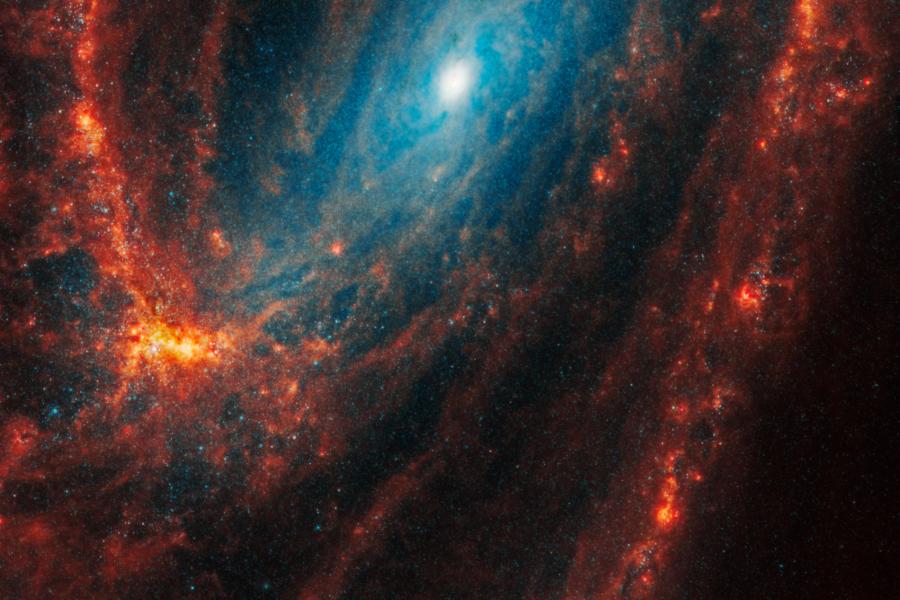The newest images from the James Webb Space Telescope, released today by NASA and the Space Telescope Science Institute, show stars, gas, and dust on small scales in 19 nearby disk galaxies beyond our own Milky Way.
Teams of researchers at Johns Hopkins University and around the world are studying these near- and mid-infrared images to uncover the origins of intricate structures in hopes of advancing our understanding of the star formation process and the evolution of spiral galaxies.
These observations are particularly exciting for David Thilker, principal research scientist in the Department of Physics and Astronomy at Hopkins. As a core member of a team of more than 150 astronomers involved in the long-standing Physics at High Angular resolution in Nearby GalaxieS (PHANGS) program, Thilker and his team will examine these new images, along with other observations previously gathered from Hubble, ALMA, and MUSE, to study the star formation cycle at the scale of individual molecular clouds and stellar clusters. Over the last two decades, Thilker has witnessed telescope images of star formation grow progressively clearer thanks to advances in technology, culminating in Webb's photos of dusty sites that were previously almost invisible.
"We finally have this astonishingly detailed and comprehensive picture of the ingredients and products of star formation," Thilker says. "We're now actively developing catalogs of the detected substructures and studying how their individual properties vary as a function of the local environment they inhabit inside a single galaxy, and how the overall populations of the star clusters, dust filaments, and molecular clouds vary as a function of the type of galaxy. ... It'll be fun in the coming years to expand the number of galaxies with ongoing observations, and specifically to diversify our study so it includes all different types of extragalactic neighbors."

Image caption: Two observations of a portion of the galaxy NGC 628 are split diagonally, with Webb’s observations at top left and Hubble’s at bottom right
Image credit: NASA AND STSCI
Thilker hopes to have a paper on the subject completed this summer, following up on early science the PHANGS collaboration published using only the first four galaxies they observed. In the meantime, he and his team have been busy with public release products for their eager audience.
"As a Treasury program with JWST, we obligated ourselves to release of science-ready images on a fairly rapid time scale so that the rest of the astronomical community could use them—and even the public," he says. "It's amazing how interested they are, and I find it extremely gratifying to help others explore the universe in this remarkable way!"
Go on, give these a whirl.
— NASA Webb Telescope (@NASAWebb) January 29, 2024
Webb just released highly detailed images of 19 spiral galaxies! These observations add new near and mid-infrared puzzle pieces to the PHANGS program, a worldwide astronomy project: https://t.co/TBNbkzUJ7p pic.twitter.com/ioYKrQPW6W
Posted in Science+Technology
Tagged space exploration, webb










